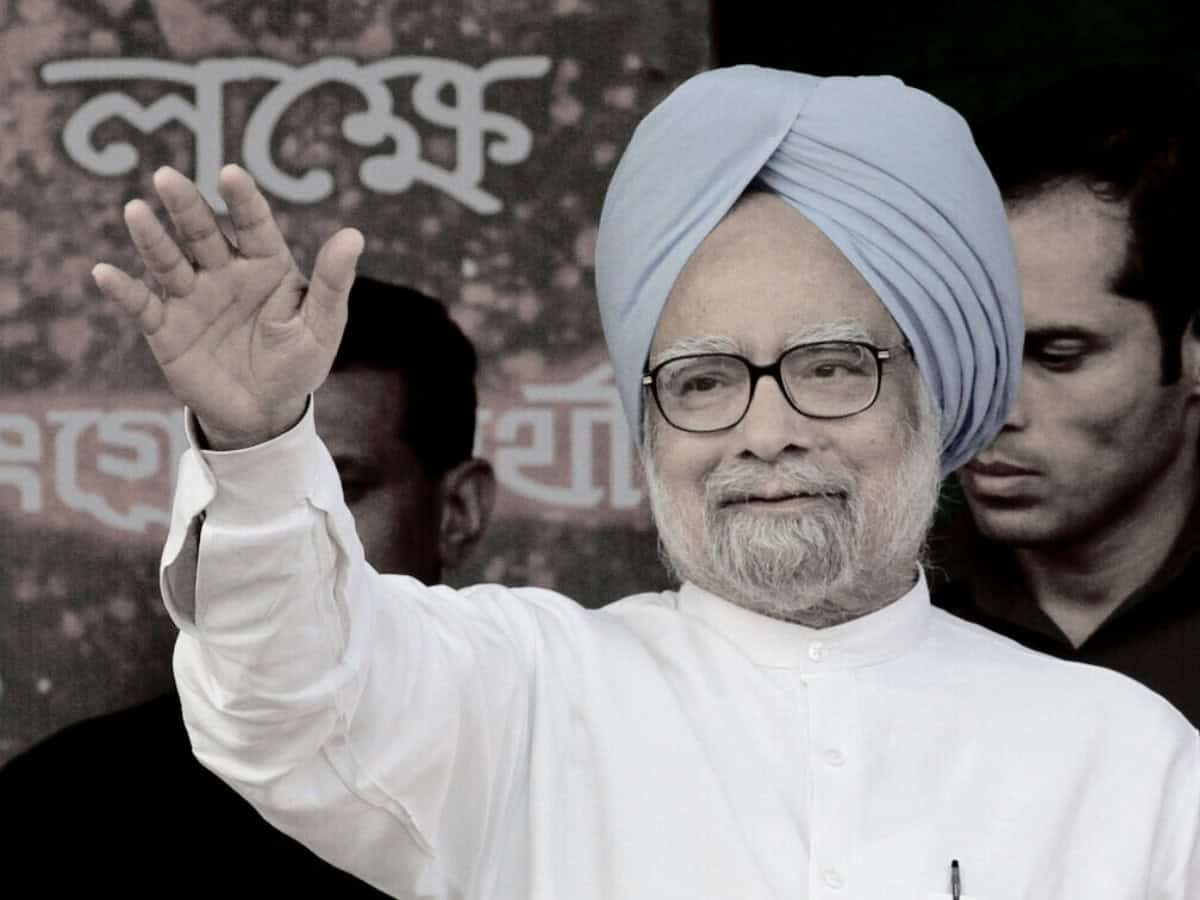
Amidst tearful mourning, it is time for a pause. One has to dispassionately recall former Prime Minister Manmohan Singh’s transcendental legacy. He led the nation from 2004 to 2014 for two consecutive terms. His colossal contribution to the collective life of India is undoubtedly more than being the architect of India’s economic liberalization. He was the one who pushed pivotal reforms, transforming the country’s growth trajectory with a human face at a time when the rulers vigorously pursued economic policies devoid of compassion. He tried to wipe out tears from teeming Indians who were reeling under stifling economic crisis.
Singh is the first Sikh to assume the role of prime minister and the first leader since Jawaharlal Nehru to secure two consecutive terms in office. A soft-spoken technocrat, Singh had an illustrious career before entering politics, having served as India’s central bank governor, finance secretary, finance minister, and opposition leader in the upper house parliament.
Here are five milestones from Singh’s remarkable life that impacted over a billion Indians.
Economic liberalization
In 1991, India faced a grave financial crisis, with foreign reserves barely sufficient for two weeks of imports. Singh was appointed finance minister under Prime Minister PV Narasimha Rao during this turbulent period.
Singh spearheaded sweeping economic reforms to avert the crisis despite resistance from within the government and his party. His initiatives included devaluing the currency, reducing import tariffs, and privatizing state-owned enterprises.
In his historic budget speech in 1991, Singh declared, “No power on earth can stop an idea whose time has come,” encapsulating the spirit of the reforms.
These changes revitalized India’s economy, paving the way for its emergence as one of the world’s fastest-growing economies. Later, Singh expanded these reforms, lifting millions out of poverty and solidifying India’s global economic standing.
A reluctant leader
The Congress party staged a surprising comeback in the 2004 elections, defeating the Atal Bihari Vajpayee-led Bharatiya Janata Party (BJP) government.
Although Congress Chief Sonia Gandhi was widely expected to become the prime minister, her Italian origins sparked significant criticism from members of the outgoing ruling party. Choosing to step aside, she proposed Manmohan Singh as the candidate. Singh, known for his integrity and non-controversial demeanour, was accepted as a consensus choice.
Singh led the Congress party to an even larger mandate in the following parliamentary elections. However, critics often labelled him a “remote-controlled” prime minister, alleging that the Gandhi family heavily influenced him. Singh rarely responded to these accusations, preferring to stay focused on his work.
Manmohan Singh may have assumed the role of prime minister with initial hesitation, but he quickly established his authority in the position.
During his first term (2004–2009), India’s GDP grew at an impressive average rate of 8%, making it the second-fastest-growing major economy. Singh implemented bold economic reforms, attracting significant foreign investment and earning praise for shielding India from the 2008 global financial crisis.
However, his second term, marked by a coalition with a diverse and often unruly group of political parties, was overshadowed by corruption allegations involving some cabinet ministers. Despite this, Singh’s integrity remained unquestioned.
Addressing these controversies during his final press conference as prime minister in 2014, Singh expressed confidence in how history would perceive his leadership. “I honestly believe that history will be kinder to me than the contemporary media, or for that matter, the opposition parties in parliament…Considering the circumstances and the compulsions of a coalition polity, I have done as best as possible.”
Right to education, information
Manmohan Singh’s tenure as prime minister was marked by transformative decisions that left a lasting impact on Indian democracy.
Singh introduced key legislation that empowered citizens and advanced social welfare. The Right to Information Act granted individuals unprecedented access to government information, enhancing transparency and accountability.
He also launched the rural employment guarantee scheme, which assured at least 100 days of wage employment annually, significantly boosting rural incomes and reducing poverty.
The Right to Education Act, ensuring free and compulsory education for children aged 6 to 14 years of age, led to a sharp decline in school dropout rates, shaping the future of millions of young Indians.
Additionally, his government initiated the Aadhar project, a unique biometric identity system aimed at improving financial inclusion and streamlining the delivery of welfare benefits. The project remains a cornerstone of governance, and Prime Minister Narendra Modi’s administration has continued and expanded it.
Apology for Anti-Sikh riots
In 1984, Prime Minister Indira Gandhi was assassinated by her Sikh bodyguards in retaliation for a military operation she had ordered against separatists hiding in the Golden Temple, Sikhism’s holiest shrine, in Amritsar.
Her assassination triggered large-scale violence, resulting in the deaths of over 3,000 Sikhs and extensive destruction of their property.
In 2005, Prime Minister Manmohan Singh delivered a historic apology in parliament, acknowledging the tragic events as “a negation of the concept of nationhood enshrined in our constitution…I have no hesitation in apologizing to the Sikh community,” Singh declared.
“I apologize not only to the Sikh community but to the entire Indian nation,” he added.
This marked the first time a prime minister, especially one from the Congress party, publicly apologized in parliament for the riots, setting a significant precedent in acknowledging and addressing historical injustices.
India-US Nuclear Agreement
In 2008, Manmohan Singh signed a landmark agreement with the United States, ending India’s nuclear isolation following its 1998 nuclear weapons tests.
The Indian government advocated for the deal, emphasizing its potential to address the country’s growing energy demands and sustain its robust economic growth. Regarded as a turning point in India-US relations, the agreement allowed India to resume civilian nuclear trade with the US and other nations under a special waiver.
Despite its significance, the deal faced fierce opposition. Critics argued that it would undermine India’s sovereignty and foreign policy independence. In protest, the Left Front withdrew its support from Singh’s coalition government, threatening its stability. Undeterred, Singh skillfully navigated the political challenges, securing his government and the historic agreement, which has since become a cornerstone of India-US strategic relations.

